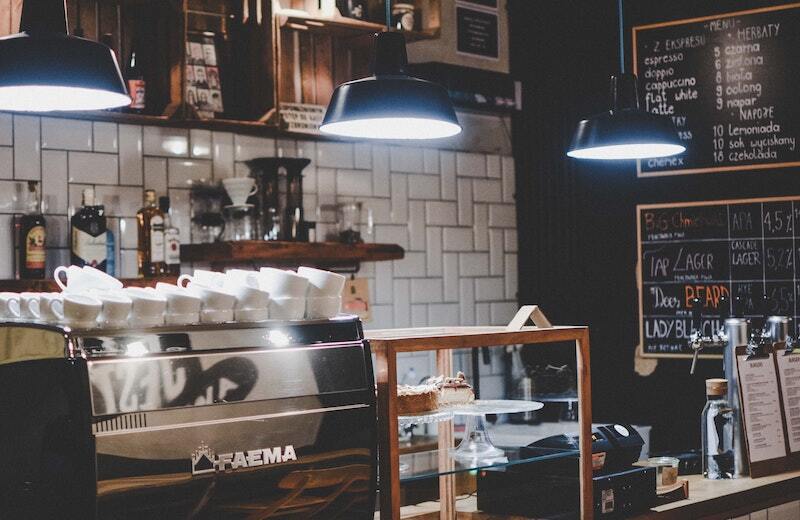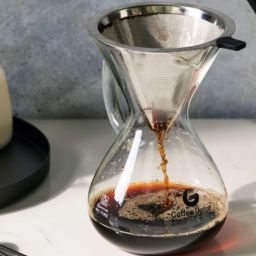
Every day, coffee shops serve up more than just a cup of joe; they offer a daily ritual for millions. But ever wonder how many cups a typical coffee shop sells each day? The answer isn’t straightforward and can depend on a myriad of factors including location, shop size, and the local coffee culture.
Key Takeaways
- Average Daily Sales: Small coffee shops might sell between 200 to 300 cups, while larger chains could push 700 cups per day. The volume can vary greatly depending on the day of the week and seasonal trends.
- Impact of Location and Demographics: A coffee shop in a bustling city center or near a large office might sell more than one tucked away in a quiet neighborhood. Demographics such as age and lifestyle of the surrounding population also play a crucial role.
- Trends in Coffee Consumption: As tastes and demographics shift, so do coffee sales. For instance, younger generations might prefer trendy new coffee types which can drive up sales volumes during certain periods.
- Operational Insights: Running a coffee shop isn’t just about brewing espresso. Costs, profitability, and managing market challenges like competition and economic shifts are all part of the game.
- Strategies to Boost Sales: Successful coffee shops often focus on quality service, unique coffee offerings, and savvy marketing to increase their daily sales.
Factors Influencing How Many Cups Of Coffee A Coffee Shop Sells Per Day: Location and Demographics
The location of a coffee shop significantly impacts its daily sales. A shop situated in a high-traffic area like a bustling city center or near a university is likely to sell more cups than one in a quieter, residential neighborhood. Local demographics are equally crucial. For instance, areas with a higher concentration of young professionals or students might see more coffee sales due to higher caffeine consumption habits among these groups.
Shop Size and Brand Recognition
The size of a coffee shop and its brand recognition also play critical roles in its sales performance. Larger shops or those part of a well-known chain generally have the capacity to serve more customers efficiently, translating to higher daily sales. Brand recognition can attract a loyal customer base who prefer the familiarity and consistency of a well-known coffee brand.
Quality of Service and Coffee
The quality of service and the uniqueness of the coffee offered can make or break a coffee shop. Excellent customer service can enhance customer satisfaction and increase the likelihood of repeat visits. Moreover, offering unique coffee blends or specialty drinks can set a shop apart from the competition, attracting more customers and boosting sales. Shops that consistently provide high-quality coffee and service are likely to see better sales figures as they build a loyal clientele.
Coffee Consumption Trends
Coffee consumption trends are continually evolving, influenced by cultural shifts and changing preferences among different age groups. Recently, there’s been a notable increase in coffee consumption among younger demographics, particularly college students and young professionals, who are embracing coffee not just for its caffeine boost but as a lifestyle choice.
This trend includes a growing interest in specialty coffees, including single-origin brews and craft preparations like cold brew and nitro coffee. These preferences are shaping the offerings at local coffee shops, which are increasingly catering to a more discerning and experimental customer base.
Business Aspects of Running a Coffee Shop: Cost and Profitability
Running a coffee shop involves various costs, from the initial setup and daily operations to sourcing ingredients and paying staff. The profitability of a coffee shop can be quite variable, influenced by its location, the efficiency of operations, and the ability to attract and retain customers. Successful coffee shop owners manage their expenses carefully while innovating their menu and service to increase average sales per customer, which is crucial for improving the bottom line.
Challenges in the Coffee Shop Industry
The coffee shop industry faces several challenges that can impact profitability. Competition is fierce, with a coffee shop on almost every corner in some cities, not to mention the prevalence of large chains with significant market power. Economic downturns can reduce disposable income, affecting how often consumers visit coffee shops. Additionally, rising costs for ingredients and rent can squeeze margins further. Coffee shop owners must stay adaptable and innovative to thrive in this dynamic market environment.
Strategies to Increase Daily Coffee Sales
Boosting daily coffee sales involves a blend of excellent customer service, high-quality products, and smart marketing. Firstly, enhancing customer service can significantly impact sales. Friendly, efficient staff and a welcoming atmosphere encourage repeat visits. Training baristas not only in coffee-making but in customer engagement can make a big difference.
Improving the quality of coffee is also crucial. Offering a variety of high-quality, unique brews can attract a broader audience. This includes sourcing better beans, experimenting with different brewing methods, and possibly introducing exclusive seasonal offers to pique interest.
Marketing tactics are equally important. Effective use of social media to showcase the coffee shop’s culture, promotions, and new products can draw in customers. Additionally, loyalty programs that reward regular customers can encourage repeat business and enhance word-of-mouth marketing.
FAQs
Do sales vary by day of the week? Yes, coffee sales often vary throughout the week, with peaks typically occurring on weekday mornings and weekends seeing a different pattern depending on the shop’s location and target demographic.
How do seasons affect coffee consumption? Seasonal changes significantly affect coffee consumption patterns. For instance, colder months might see an increase in hot coffee sales, while warmer periods could boost the demand for iced and cold brew options. Seasonal flavors and specials can also attract more customers.
Final Thoughts
Understanding the factors that influence daily coffee sales in coffee shops reveals a dynamic and challenging business environment. From location and demographics to the quality of coffee and customer service, many elements play a role in determining success. Embracing these complexities with strategic planning and adaptability is key to thriving in the competitive coffee shop industry.









